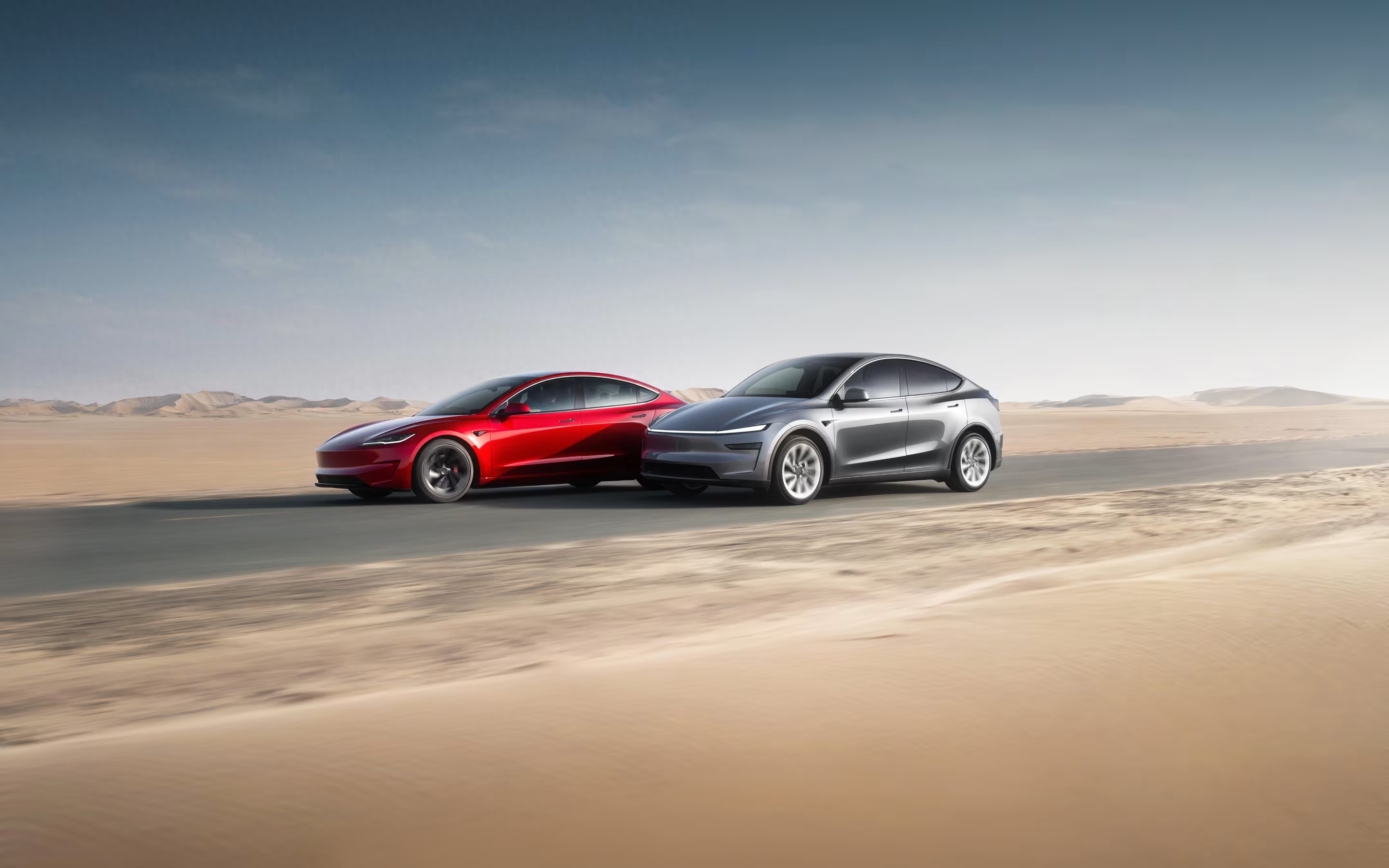TMTPOST -- Tesla Inc. on Tuesday launched cheaper variants of its best-selling models as the electric vehicle (EV) titan is working to weather the end of U.S. federal tax credit for clean vehicles, which has driven its deliveries hit the quarterly record ahead of expiring the subsidy.

Credit:Tesla
The Rear-Wheel Drive (RWD) Model Y Standard sport utility vehicle (SUV) variant now starts at $39,990, and the RWD Model 3 Standard sedan is priced at $36,990 for the U.S. market, according to Tesla website. These variants are about 11% and 13% cheaper, respectively, than the premium longer-range RWD versions of each model.
Both of variants are scaled-down compared to their premium RWD variants. The cheaper Model Y Standard has a range of 321 miles on a full range due to a smaller, 69.5 kWh (kilowatt-hour) battery, down from 357 miles in the premium version, and takes 6.8 seconds to accelerate to 60 miles per hour (mph), 1.4 seconds slower than the premium version. The current Model 3 Standard can go for 321 miles on a single charge and sprint to 60 mph in 5.8 seconds, compared with a range of 363 miles and a 0-60 mph time of 4.9 seconds delivered by the premium variant.
Both new models have no rear passenger screens, no second-row heated seats, and even no built-in FM radios. The Model Y Standard has just 7 speakers for audio system while the each of the other versions boasts 15 speakers and 1 subwoofer. For driver assistance, new models don’t offer Autosteer so drivers have to adjust the steering wheel manually. Both models have simplified interiors including textile inserts, instead of the microsuede and textile decor.
Tesla’s more affordable models are unsurprising as the company has to counter the loss of a major U.S. government incentive boosting EV sales in recent years. As part of the Trump administration’s rollback of emission mandates, the federal tax credit of up to $7,500 on EVs and plug-in hybrids expired on September 30, making a new EV more expensive. The lower prices may attract some buyers when the federal subsidy went away.
Tesla last week announced it globally delivered 497,099 vehicles for the third quarter of 2025, setting its quarterly delivery record as the federal tax credit came to an end. The deliveries represented a 7.4% year-over-year (YoY) increase, and easily beating the average Wall Street analysts expected around 456,000 units, according to FactSet. The margin of that beat was the widest since the first quarter of 2021.
The latest deliveries marked an unique U-turn, in part driven by American buyers who rushed to buy a car before the tax credit ended. Tesla just posted a 14% YoY decrease in delivery for the quarter ended June, the second straight quarterly decline, highlighting intense competition and political backlash against CEO Elon Musk. Tesla is estimated to have retained its leadership with a 43.1% U.S. market share from January to September, according to data from Motor Intelligence, down from a 49% share as of the end of 2024.
The end of tax credit is not deemed as the only reason for the big quarterly sales beat. RBC Securities analyst Tom Narayan believed that weakness for BYD Co., Ltd. and other Chinese competitors resulting from Chinese government initiatives to end price wars and help domestic suppliers also worked.
"While the U.S. EV credit expiry in September likely helped, we also think the softening performance by domestic Chinese [original equipment manufacturers] were a contributing factor to Tesla"s performance," Narayan said.
Wedbush analyst Dan Ives, a long-time Tesla bull, said that "China remains a positive point" for Tesla. More low-cost EVs entered the Chinese market, but the recently updated Model Y is spurring "continued demand in the region," he said.















